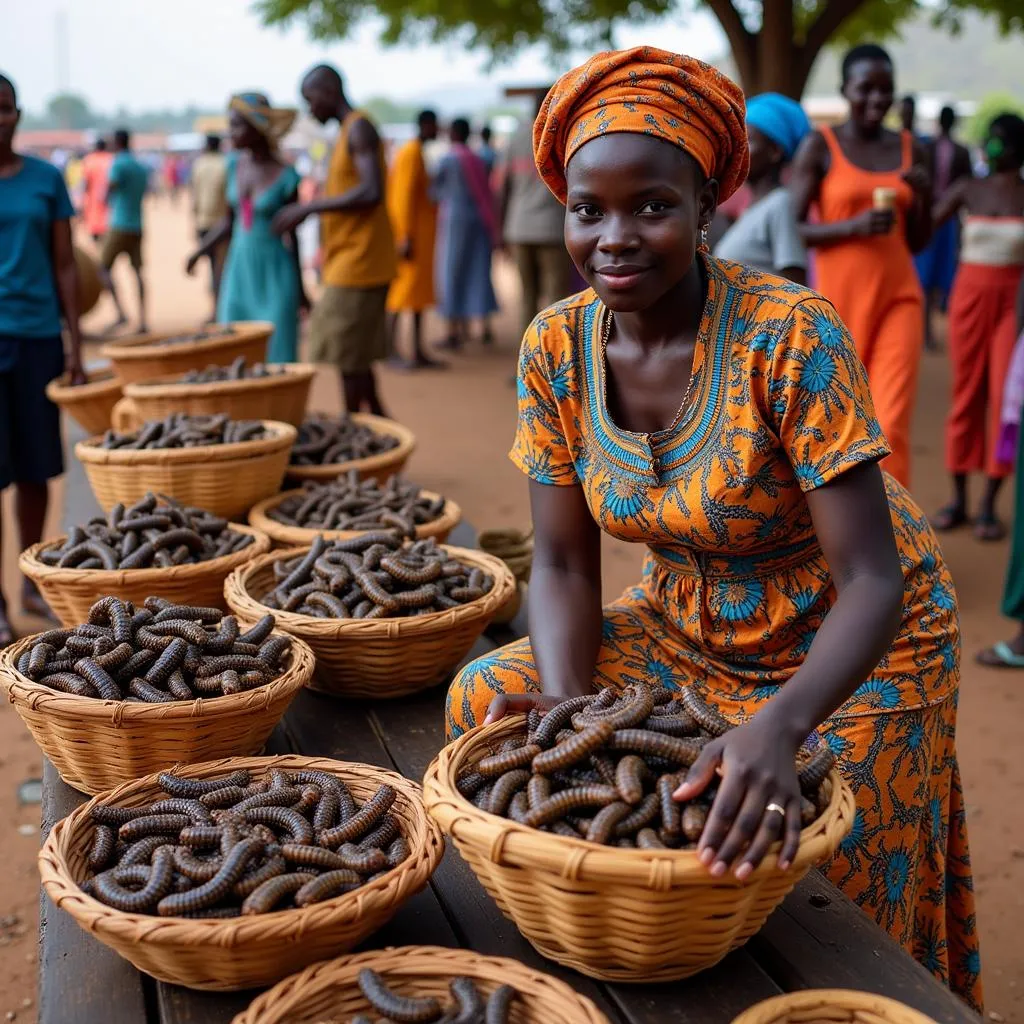Exploring the Vibrant World of African Hip-Hop Dance
African hip-hop dance is a dynamic and evolving art form that reflects the diverse cultures and experiences across the African continent. It’s a powerful expression of creativity, storytelling, and social commentary, drawing inspiration from traditional African dance styles while embracing the global influence of hip-hop culture. From the energetic moves of Coupé-Décalé in Ivory Coast to the rhythmic grooves of Azonto in Ghana, African hip-hop dance has captivated audiences worldwide with its infectious energy and unique stylistic variations.
The Roots and Evolution of African Hip-Hop Dance
African hip-hop dance didn’t emerge in a vacuum. It’s deeply intertwined with the rich tapestry of traditional African dance forms that have existed for centuries. These traditional dances often serve as a vital means of communication, celebrating important events, and passing down cultural knowledge from one generation to the next. The integration of hip-hop elements, beginning in the late 20th century, created a vibrant fusion, blending traditional rhythms and movements with the contemporary flair of hip-hop. This evolution has given rise to a multitude of unique dance styles across different regions, each with its own distinct flavor and cultural significance.
The influence of global hip-hop culture, particularly from the United States, played a significant role in shaping the development of African hip-hop dance. However, African artists and dancers have reinterpreted and adapted these influences, creating something uniquely their own. They’ve infused hip-hop dance with their own cultural narratives, social experiences, and artistic expressions, resulting in a vibrant and constantly evolving art form.
Popular Styles of African Hip-Hop Dance: A Diverse Landscape
From the streets of Lagos to the clubs of Nairobi, African hip-hop dance takes on a multitude of forms, each reflecting the unique cultural context of its origin. Here are just a few examples of the diverse styles that have emerged across the continent:
- Coupé-Décalé: Originating in Ivory Coast, Coupé-Décalé is characterized by its energetic and often humorous movements. It’s a celebration of life, often incorporating flamboyant gestures and playful interactions.
- Azonto: Hailing from Ghana, Azonto is known for its rhythmic footwork and fluid body movements. The dance often mimics everyday activities, adding a touch of humor and relatability.
- Pantsula: This South African dance style is characterized by its fast-paced footwork and intricate movements. Pantsula often incorporates acrobatic elements and serves as a powerful form of social commentary.
- Kwaito: Another South African style, Kwaito is known for its laid-back groove and rhythmic movements. It’s a celebration of youth culture and often features lyrics that address social and political issues.
These diverse styles demonstrate the creative energy and cultural richness that permeate African hip-hop dance. They are a testament to the power of dance to express identity, tell stories, and connect with audiences on a deeply personal level.
The Social and Cultural Impact of African Hip-Hop Dance
African hip-hop dance is more than just entertainment; it’s a powerful tool for social change and cultural expression. It provides a platform for young people to express themselves, challenge social norms, and address important issues facing their communities. The dance often reflects the realities of life in Africa, addressing themes of poverty, inequality, and political corruption. It also serves as a means of celebrating African identity, promoting cultural pride, and fostering a sense of unity among diverse communities.
Dr. Abena Osei, a renowned ethnomusicologist specializing in African music and dance, notes, “African hip-hop dance provides a powerful voice for the youth, allowing them to express their hopes, dreams, and frustrations through movement. It’s a dynamic and evolving art form that reflects the changing landscape of African society.”
What are the key elements of African hip-hop dance?
African hip-hop dance incorporates a blend of traditional African rhythms, movements, and contemporary hip-hop influences.
Where did African hip-hop dance originate?
African hip-hop dance evolved from traditional African dance forms, incorporating global hip-hop influences.
Conclusion
African hip-hop dance is a vibrant and evolving art form that reflects the diverse cultures and experiences across the African continent. From its roots in traditional African dance to its embrace of global hip-hop influences, African hip-hop dance continues to captivate audiences worldwide with its infectious energy and powerful message.
FAQ
- What are some popular African hip-hop dance styles? Some popular styles include Coupé-Décalé, Azonto, Pantsula, and Kwaito.
- How does African hip-hop dance differ from American hip-hop dance? African hip-hop dance often incorporates traditional African dance elements and rhythms.
- What is the cultural significance of African hip-hop dance? It serves as a powerful tool for social commentary, cultural expression, and youth empowerment.
- Where can I learn more about African hip-hop dance? Numerous online resources, dance studios, and cultural centers offer information and classes.
- Who are some prominent African hip-hop dancers? Researching specific countries or styles can reveal notable dancers and choreographers.
- How has African hip-hop dance evolved over time? It has evolved by blending traditional African dance with global hip-hop influences, creating diverse and unique styles.
- What is the future of African hip-hop dance? The future is bright, with continued innovation and global recognition expected.
We also have other articles on African music and dance on our website. Explore them to delve deeper into the rich cultural tapestry of Africa!
When you need assistance, please contact us at Phone Number: +255768904061, Email: kaka.mag@gmail.com, or visit our address: Mbarali DC Mawindi, Kangaga, Tanzania. We have a 24/7 customer service team.


